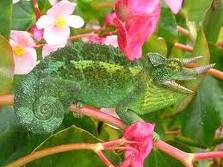- Change in an organism’s physical structure or behavior that improves its ability to survive in its habitat
- Anything that helps an organism survives in its environment is an adaptation
- Adaptation also refers to organisms’ ability to adjust to various conditions within their environment
- Examples: change in the size of bird’s beak, development of sharp teeth and claws, etc.
Types of Adaptation:
- Structural adaptation-
- -involves physical features of an organism that helps it to strive and survive in its environment
- -ex: teeth, locomotion, and body covering
- The shape of an animal’s teeth is related to its diet.
- Herbivores, such as deer, have many molars for chewing tough grass and plants.
- Carnivores, such as lions, have sharp canines to kill and tear meat.
Examples of Structural adaptations:
- Protective coloration (Camouflage)
- Example: Snakes
Mimicry
- Is a method used by animals to physically appear and behave like another animal to fool predators into thinking it is poisonous or dangerous.
- Coloration- the color of fur, skin, feathers, etc.
- Ex: coloration on an animal’s fur coat can be the same color as trees, plants, and/or landscape during winter months
- Behavioural Adaptation:
- Actions and behaviors of an animal that are instinctive or can be learned
- Ex: rabbit freezes if it thinks that it has been seen by a predator
- Migration- involves a group of animals moving from a new geographical area to another and then back
Reasons for migration:
- Better climate
- Greater chances of finding food
- Safety (safe place to raise young)
- Return to place of birth
Hibernation-
- A state of ‘deep sleep’
- Organisms body temperature drops to be able to conserve energy
- Ex: Bears and bats

